by Lorri | Aug 14, 2013 | UnCorked
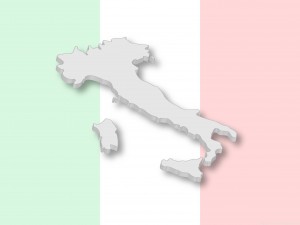 Smaller than the state of California, Italy remains one of the world’s leading producers of wine, and is home to more native wine grapes than any other country. Italy is probably best known for its full-bodied reds, and considering many of us are looking for refreshing and zippy flavors as summer temperatures continue to rise, Italian wine (other than pinot grigio) is likely not our first thought.
Smaller than the state of California, Italy remains one of the world’s leading producers of wine, and is home to more native wine grapes than any other country. Italy is probably best known for its full-bodied reds, and considering many of us are looking for refreshing and zippy flavors as summer temperatures continue to rise, Italian wine (other than pinot grigio) is likely not our first thought.
We continue to be smitten with Italian pinot grigio but there are other bright, refreshing Italian superstars.
Soave is one of my favorites, for its relatively low alcohol content (usually around 12 percent) and light-bodied refreshing taste. Look for “Classico” on the label. This lets you know it was produced in the heartland using the traditional expression of the garganega grape. Italian law stipulates Soave must be a blend of 70 percent garganega and 30 percent blend of chardonnay, trebbiano di Soave and pinot blanc.
THE VALUE
- 2012 Re Midas Cantina Di Soave, Italy (about $10 retail)
THE SPLURGE
- 2012 Folonari Soave, Italy (about $13 retail)
Orvieto is made from the trebbiano grape. Usually an assortment of other Italian whites are added to the blend. In the past it was known as a sweetish style of wine using “noble rotten” grapes, but the more modern styles are generally dry. It is aromatic, with fresh lemony fruitiness and the occasional hint of almond.
THE VALUE
- 2011 Villa Antinori Orvieto, Italy (about $13 retail)
THE SPLURGE
- 2011 Argillae Orvieto DOC, Italy (about $18 retail)
Most consumers have never explored the refreshing taste of Gavi. This wine is another of my favorites, not only because of the excellent value but its ability to pair with almost any summer menu. Made from the cortese grape, it usually has a crisp acidity that can range from almost tart to mellow and citrusy.
THE VALUE
- 2012 Michele Chiarlo Gavi, Italy (about $22 retail)
THE SPLURGE
- 2012 Pio Cesare Cortesa Di Gavi (about $28 retail)
by Lorri | Aug 7, 2013 | UnCorked
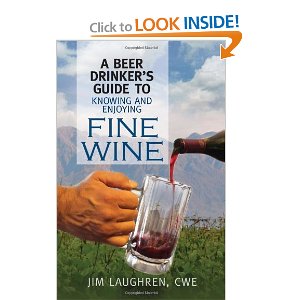 I just finished an interesting book for the die-hard beer drinkers out there: A Beer Drinker’s Guide to Knowing and Enjoying Fine Wine by James Laughren. The book encourages the beer drinker to embrace getting to know the other fermented beverage. Laughren clears a path through the wine world with tips “hidden among nuggets of beer lore, the secret tips for appearing extra wine smart while building your knowledge.”
I just finished an interesting book for the die-hard beer drinkers out there: A Beer Drinker’s Guide to Knowing and Enjoying Fine Wine by James Laughren. The book encourages the beer drinker to embrace getting to know the other fermented beverage. Laughren clears a path through the wine world with tips “hidden among nuggets of beer lore, the secret tips for appearing extra wine smart while building your knowledge.”
I am by no means a beer expert, but with a little research and tasting opportunities I put together a few styles of beer easily complementing a wine style.
If you like pale ale you may like pinot noir. Pinot noir is a lighter red wine without the heavy tannic bite you usually get from fuller bodied wines. Also similar to beer, pinot noir’s light style makes it easy to serve chilled.
THE VALUE
- 2011 Gnarly Head Pinot Noir, California (about $12 retail)
THE SPLURGE
- 2011 A to Z Oregon Pinot Noir, Oregon (about $22 retail)
If you like light beer or American lager, you may like brut cava. Both are bubbly and refreshing and easily pair with a variety of foods.
THE VALUE
- NV Freixenet Brut Cava, Spain (about $10 retail)
THE SPLURGE
- NV Sumarroca Brut Cava, Spain (about $18 retail)
If you drink IPA (India Pale Ale), you may like carmenere. Carmenere has a balance of savory, bitter and fruity.
THE VALUE
- 2011 Root 1 Carmenere, California (about $12 retail)
THE SPLURGE
- 2011 La Playa Axel Carmenere, Chile (about $26 retail)
If you drink wheat beer you may like a buttery rich chardonnay. Chardonnay offers a quenching, refreshing taste that always has a creamy smooth texture similar to a wheat beer.
THE VALUE
- 2011 Butternut Chardonnay, California (about $16 retail)
THE SPLURGE
- 2011 La Crema Sonoma Chardonnay, California (about $26 retail)
by Lorri | Jul 31, 2013 | Tips, UnCorked
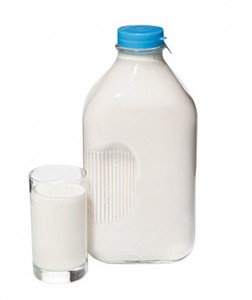 Summer is well underway and the soaring temperatures bring a recurring question from Uncorked readers: How does heat affect bottled wine?
Summer is well underway and the soaring temperatures bring a recurring question from Uncorked readers: How does heat affect bottled wine?
You run into the wine shop and grab a few bottles. On your way home you continue checking off your errand list with a stop at the cleaners, the bank and the grocery store. Meanwhile those bottles are sitting in the 100-degree-plus temperature of your parked car.
When wine is subjected to high temperatures, the quality will most likely be jeopardized. It happened to me when what I thought was going to be a quick meeting turned into a three-hour session. By the time I returned to my car, the cork was pushing out of the bottle and, worse, it leaked onto the carpet of my car.
Heat increases the rate at which wine ages or is oxidized. Oxidation is a chemical process and like most chemical processes, heat increases the reaction rate. High temperatures can affect the aging capability of wine and its taste. When wines are subjected to heat it’s no longer undergoing the ideal slow maturation because the heat-stressed wine is subjected to a sharp and awkward jolt forward in its life. Even if your just-bought wine was intended for dinner and not cellar time, heat can still affect the taste and aroma.
Call me overcautious but I now treat my wine purchase as I do ice cream or milk. You wouldn’t leave these items in the car while you take on an afternoon of errands in the summertime.
When outside temperatures are pushing the extreme, the temperature inside your home can be a problem too. Keep wine in your refrigerator if you don’t have a cellar or put it in a cool, dark place like a basement or closet corner. Keep wines away from windows or sunlight. Don’t store wine in a garage, on top of the refrigerator or in a cupboard next to the oven.If you have a standing wine rack keep it near an air-conditioning vent in the summer but far away from the heating vent in the winter.
by Lorri | Jul 24, 2013 | UnCorked
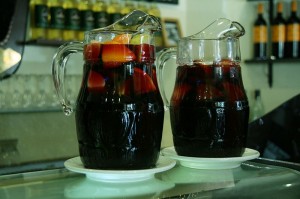 Wine lovers are always on the lookout for ideas for summer sipping, and sangria may be the drink.
Wine lovers are always on the lookout for ideas for summer sipping, and sangria may be the drink.
The fruit-infused wine is going through a bit of an image makeover, shedding its cheap and sweet image to emerge as trendy, refreshing and premium. These ready to-drink bottles not only offer the taste of traditional recipes but are also available in innovative and shockingly refreshing styles. I recently tasted a few and found a couple worth filling an ice-cold pitcher.
When I saw the accolade of “Most Chillable Red” by NBC’s Today Show for Slices sangria, it had my attention and the tasting research began. Slices sangrias are made in Spain where sangria originated and has been shared around dining tables for hundreds of years. Slices’ recipe is from seasoned winemaker Miguel Gurpide, whose enjoyment of sangria dates back to his boyhood memories of these fruit-infused wines served at dinner in the summer. The grapes are local Spanish varieties blended with all-natural fruit juices.
Eppa SupraFruta Sangria also received great reviews. It was created by a group of friends who loved the mixture of superior wine and real fruit. They wanted a way to simply pour and enjoy premium-quality sangria. They use wine from California’s Mendocino County and have a strong emphasis on certified organic brands. The fruit is also organic and the blends for the red boast a few well-known powerhouse antioxidants of pomegranate, blueberry, blood orange and acai juice.
With more and more consumers interested in something different, something sweet and something with a nod at healthy, the new image of Spanish sangria may be worth a taste.
- 2012 Eppa SupraFruta Red, California (about $12 retail)
- 2012 Slices Red Wine Sangria, Spain (about $12 retail)
- 2012 Slices Rose Wine Sangria, Spain (about $12 retail)
- 2012 Slices White Wine Sangria, Spain (about $12 retail)
by Lorri | Jul 17, 2013 | UnCorked
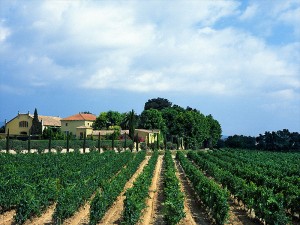 My loyalty lies with American winemakers but I still have a deep affection for the wines of Spain. After our last trip to Spain I wrote about the first and foremost wine known by most when we think of Spain – sherry. But during our recent trip I looked around at what the people of Spain were drinking. Just as we have our favorite standbys of chardonnay and merlot, Spanish wine drinkers have their safe bets too.
My loyalty lies with American winemakers but I still have a deep affection for the wines of Spain. After our last trip to Spain I wrote about the first and foremost wine known by most when we think of Spain – sherry. But during our recent trip I looked around at what the people of Spain were drinking. Just as we have our favorite standbys of chardonnay and merlot, Spanish wine drinkers have their safe bets too.
ALBARINO
The albarino varietal is one of Spain’s best-kept wine secrets. You could compare it to the viognier in some ways but lighter, with more acidity. The light and refreshing wine is an ideal match for Spain’s local-catch seafood dishes. The grapes are grown and the wine produced in the northwest corner of Spain in the Rias Baixas region. Most of Spain’s growing regions can best be described as hot, hotter and downright unbearable. This region is cooler and has an abundance of rainfall, giving this wine its delicate, lively aromatic characteristics.
THE VALUE
- 2012 Ramon Bilbao Albarino, Spain (about $15 retail)
THE SPLURGE
- 2011 La Cana Albarino, Spain (about $20 retail)
VERDEJO
Verdejo (ver-DAY-ho) is Spain’s answer to sauvignon blanc. In the Andalusia region it was on every restaurant wine list, in every wine shop and even in the supermarkets. In most restaurants it’s the varietal used as the house wine, with a listing of “Vino blanco.” The grape is indigenous to the Rueda region in northeastern Spain along the Douro River. The style can be crisp and grassy, similar to sauvignon blanc,or richer, much like a California unoaked chardonnay. It is a style of wine easily paired with a wide range of foods.
THE VALUE
- 2011 Tapena Verdejo, Spain (about $11 retail)
THE SPLURGE
- 2011 Nisia Old Vine Verdejo, Spain (about $16 retail)
CAVA
When in Spain, there is no other ideal bubbly than Spanish Cava. It generally has more acidity than other sparkling wines and therefore it pairs with many cuisines. We had it as an aperitif, with seafood, paella and even pasta. It’s produced in the Penedes region of Catalonia using the same winemaking method as the honored Champagne, but with indigenous grapes. The result is a refreshing, sparkling wine at half the price of most Champagne.
THE VALUE
- NV Segura Viudas Brut Reserva, Spain (about $12 retail)
THE SPLURGE
- NV Sumarroca Cava Brut, Spain (about $19 retail)
by Lorri | Jul 10, 2013 | Tips, UnCorked
 As I write this column I have just returned home from a long, relaxed stay in Spain with my family. (Many columns to come about my adventures and discoveries in the Iberian peninsula). As I made my way through the numerous airports I realized my wine travel tips might be immediately relevant to those of you with suitcases already packed and travel confirmed.
As I write this column I have just returned home from a long, relaxed stay in Spain with my family. (Many columns to come about my adventures and discoveries in the Iberian peninsula). As I made my way through the numerous airports I realized my wine travel tips might be immediately relevant to those of you with suitcases already packed and travel confirmed.
For those of us who travel frequently it’s common to keep a wine opener in our bags. I always keep one in my briefcase, because on one trip years ago the only help the front desk of my hotel could offer was a metal fork. (Oddly enough, with patience and precision, I actually got the fork to work.)
When traveling by plane, make sure you pack the opener in your checked luggage. A wine opener is only handy to have until it is confiscated during the security screening. It happened to me this trip and I must say it was painful to watch as one of my favorite openers was haphazardly tossed into the box of the abyss.
Because we can now carry only very small amounts of liquids on the plane, bringing back bottles of wine poses special challenges. In the past, those few sacred bottles were easily packed in carry-on bags where they wouldn’t be crushed, jostled or otherwise in danger of breaking. Now you need more planning in order to arrive home with your purchase. You can try the old (and risky) strategy of wrapping the bottle in a thick sock, packing it in the center of your suitcase wrapped with clothes and hoping it doesn’t break or leak by the time you reach your final destination. But there’s a better way. There are many options for protecting your bottles in checked luggage. Several of my favorites are the Vinni-Bag (vinnibag.com), Winehug (winehug.com) and Wine Skin (wineskin.net). These products basically create a sturdy air cushion around the bottles. The drawback is they are bulky and take up precious space in a suitcase. The worst part of my trip was the realization that mine were still sitting on my desk at home.
As I was collecting my baggage in customs I noticed that someone else had a red bag with a large logo depicting a wine bottle with wings. After some research I discovered it’s called The Wine Check, and it is what I think could be a smart option for getting our precious cargo safely home. It looks like a square rolling suitcase but is specially designed to hold one case (12 bottles) of wine while staying under the 50-pound limit most airlines allow. I watched the durability test video on the website and was impressed with the results.
If your travel involves wine and an airplane, I hope my own wine travel blunders help you to avoid the same mistakes.
 Smaller than the state of California, Italy remains one of the world’s leading producers of wine, and is home to more native wine grapes than any other country. Italy is probably best known for its full-bodied reds, and considering many of us are looking for refreshing and zippy flavors as summer temperatures continue to rise, Italian wine (other than pinot grigio) is likely not our first thought.
Smaller than the state of California, Italy remains one of the world’s leading producers of wine, and is home to more native wine grapes than any other country. Italy is probably best known for its full-bodied reds, and considering many of us are looking for refreshing and zippy flavors as summer temperatures continue to rise, Italian wine (other than pinot grigio) is likely not our first thought. I just finished an interesting book for the die-hard beer drinkers out there: A Beer Drinker’s Guide to Knowing and Enjoying Fine Wine by James Laughren. The book encourages the beer drinker to embrace getting to know the other fermented beverage. Laughren clears a path through the wine world with tips “hidden among nuggets of beer lore, the secret tips for appearing extra wine smart while building your knowledge.”
I just finished an interesting book for the die-hard beer drinkers out there: A Beer Drinker’s Guide to Knowing and Enjoying Fine Wine by James Laughren. The book encourages the beer drinker to embrace getting to know the other fermented beverage. Laughren clears a path through the wine world with tips “hidden among nuggets of beer lore, the secret tips for appearing extra wine smart while building your knowledge.”


 As I write this column I have just returned home from a long, relaxed stay in Spain with my family. (Many columns to come about my adventures and discoveries in the Iberian peninsula). As I made my way through the numerous airports I realized my wine travel tips might be immediately relevant to those of you with suitcases already packed and travel confirmed.
As I write this column I have just returned home from a long, relaxed stay in Spain with my family. (Many columns to come about my adventures and discoveries in the Iberian peninsula). As I made my way through the numerous airports I realized my wine travel tips might be immediately relevant to those of you with suitcases already packed and travel confirmed.